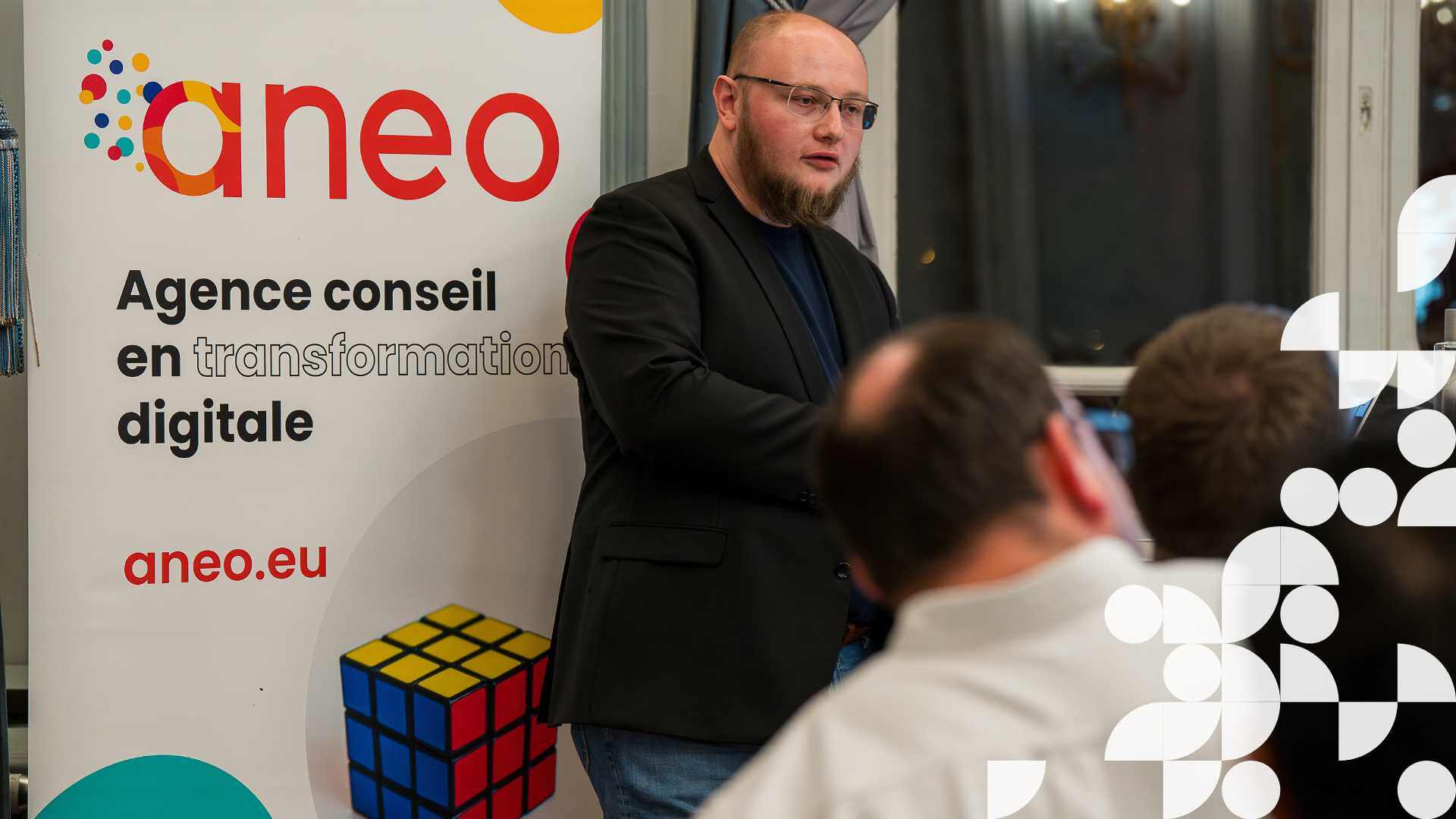Hello Hugo, first of all, thank you for accepting this interview. You know Aneo and our dual passion for startups on the one hand, and tech on the other! As you know, we run a circle of CIOs, but also a newsletter aimed at startups for whom tech is vital!
We talk about advanced technologies: HPC, AI, Data, which need to scale up with the cloud.
Hugo Cornu, who are you?
I'm a Supélec engineer who has spent his entire career in data processing. My previous job was head of the Data practice of an IT consulting firm. But my passion for biology comes from my mother, an immunology researcher. Two years ago, I came across an incredible startup, One Biosciences, founded by a researcher, Céline Vallot, and I signed up without hesitation for the CTO job, which brought together my passion for tech and my passion for the world of research in the service of health.
Can you tell us about One Biosciences?
One Biosciences is a biotech start-up developing new solutions for complex diseases. We specialize in the use of "single cell" technology, which enables genetic material to be sequenced cell by cell. This makes it possible to analyze differences between cell subtypes that were previously unobservable. This skill has been developed by our scientific co-founder Céline Vallot, who also holds the position of research director at the Institut Curie on single cell sequencing. Because of the sheer volume of data generated by the single cell approach, we make extensive use of AI and, more recently, Larges Genomics models.
We collaborate with a vast ecosystem of partners, including APHP, Institut Gustave Roussy and Institut Curie, to obtain samples and use specific algorithms to identify the most promising genes for drug development. We are currently focusing our efforts on diseases such as ovarian cancer, brain cancer and a kidney disease that affects rare cells.
Our business model is based on developing drugs in partnership with pharmaceutical companies or on our own. We also aim to develop the use of single cells and AI for patient diagnosis. After an initial fund-raising round of 7 million euros, we're aiming to raise another round this year. What's more, we've been recognized by Challenges magazine as one of the 100 best companies to invest in.
What are the IT peculiarities in the field of bioinformatics and genomics that your team is confronted with?
1. IT/technological challenges
They are many and varied, encompassing virtually every major algorithmic problem. For example, there's image analysis, biological network analysis (using graph theory), natural language processing (for bibliography), or HPC issues.
2. Crucial interdisciplinarity
Even with twelve years' experience in data sciences, I've never experienced such a strong interdependence between business and IT expertise. Our biology and Tech/Data teams have to work together constantly to produce results.
3. Data security and confidentiality
This is of paramount importance in our field, with standards that are stricter than in other industrial sectors.
How are you organized at One Biosciences?
There are twelve of us, divided into three teams.
Firstly, the laboratory team processes the biological samples to produce an RNA profile per cell processed. Secondly, my team carries out data engineering and algorithmic work to make the data exploitable and enriched. Finally, the biology team derives new therapeutic targets, which will be tested in the laboratory.
The interaction between these different teams is not only a necessity, but also a strength. It's a great source of job satisfaction for our employees. We have chosen to locate our offices in the same building and on the same floor as the laboratory, thus encouraging daily exchanges.
Can you tell us about your multi-disciplinary team and the strategies you employ to encourage collaboration and innovation within it? In fact, how do you maintain levels of expertise in the different fields?
I rely on the academic bioinformatics community. Last year, my team took part in a total of 5 conferences and 2 professional training courses. And then there are the online conferences, the collective reading of scientific articles and the POCs. It's time well invested, with a visible ROI.
In terms of business continuity, we try to form skill pairs to manage absences. For example, we involve a biologist and a data engineer in the creation of a gene network algorithm, so that each is autonomous in its development.
What are your current challenges?
1. Increasing the number of projects
The challenge for the future of One Biosciences is to scale up. Our technology can provide new solutions for many diseases. This year, we are launching four new clinical projects, two more than last year.
2. Generative AI and Genomics
Generative AI is not limited to text and images. It can also be trained on RNA expression profiles, which has many promising applications in genomics. Mastering these models, known as LGMs (Large Genomic Models), is therefore a key factor in staying in the race. Also, on the subject of AI, at the AWS Summit we presented how we modified an LLM for our bibliographic research needs.
In your opinion, what are the key differences between a CTO in a start-up and a CIO in a large corporation?
A CTO in a startup is not just working on a smaller scale. There are fewer teams and projects running in parallel, but each project is absolutely vital to the startup. So we need to keep both a good technical grasp and a strategic eye on things, so as not to leave any room for error in our algorithms, or any opportunity to go faster.
Finally, what advice would you give to our readers eager to embark on a career like yours?
As a manager, it's natural to focus on your team, but not at the risk of forgetting yourself. In fact, you need to take care of your own "work-life" balance - sport, diet, personal projects - to be able to look after others effectively.
Last but not least, clear communication of the company's challenges and participation in important decisions strengthen employee commitment and motivation.



